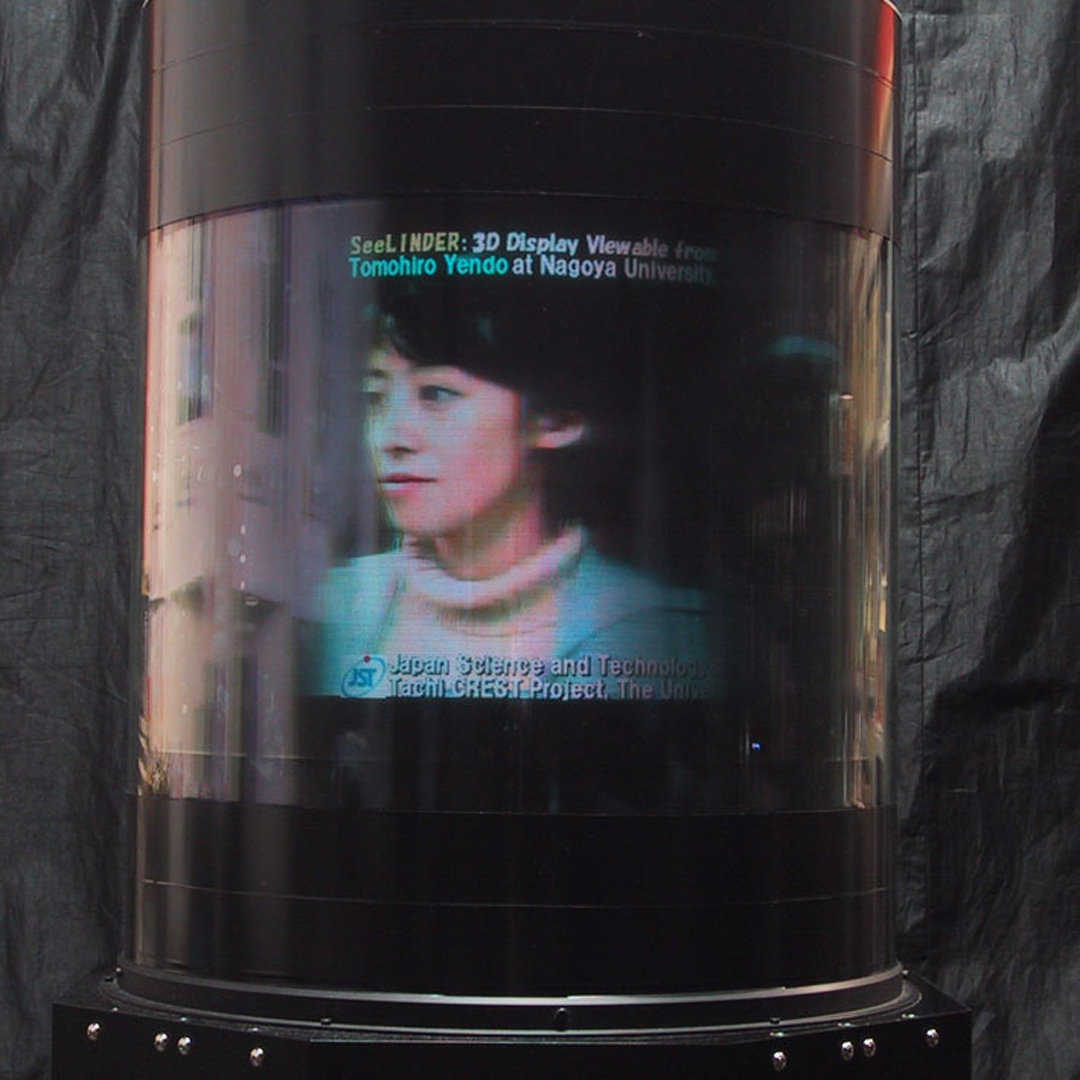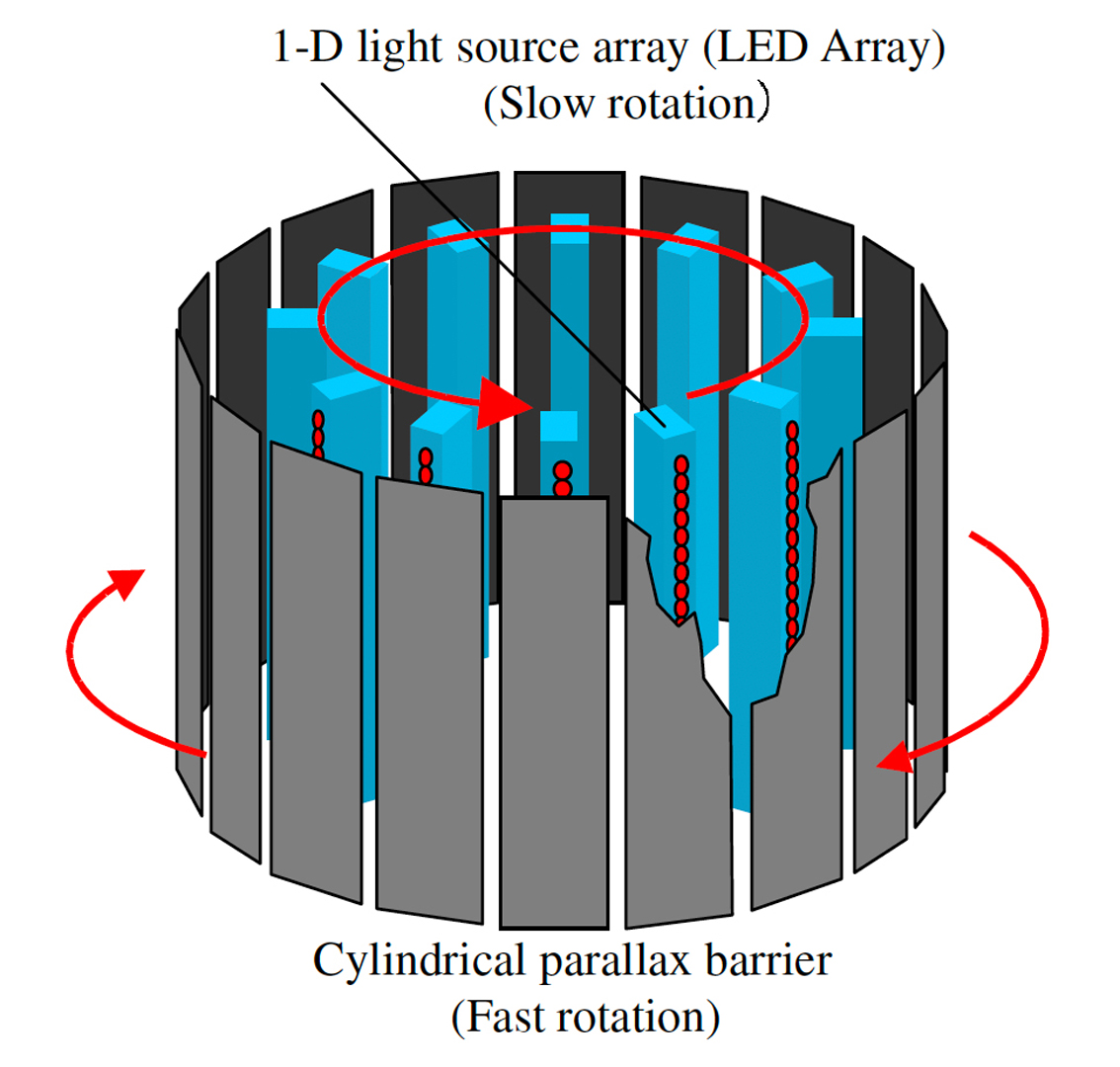“Seelinder: The Cylindrical Lightfield Display” by Yendo, Kawakami and Tachi
Conference:
Experience Type(s):
E-Tech Type(s):
Entry Number: 16
Title:
- Seelinder: The Cylindrical Lightfield Display
Organizer(s)/Presenter(s):
Project Affiliation:
- University of Tokyo and Nagoya University
Description:
The ideal 3D display allows multiple viewers to simultaneously see 3D images without special glasses from a free position and a view that corresponds to there positions. Since the multiplex hologram [Cross 1977] device has these features, it is used in the display of artwork, entertainment, advertisements, and other applications. However, it can only display static images. On the other hand, some volumetric scanning displays [Favalora et al. 1995] are used to display dynamic images that can be seen from free directions; however, their applications are limited because their images are “phantom images,” where all objects are see-through. It is difficult to provide a multiview display that can be seen from all horizontal directions with conventional methods, such as using lenticular sheets, due to the limitations of resolution and the shape of the two-dimensional display devices, which include LCD panels. In other approaches, we have proposed a ray-based cylindrical display [Endo et al. 2000] that allows multiple viewers to see 3D images from a 360◦ horizontal arc. This technique uses a cylindrical parallax barrier and a one-dimensional light source array constructe from such semiconductor light sources as LEDs aligned in a vertical line. The light source array rotates along the inside of the cylindrical parallax barrier, and the intensity of each light is synchronously modulated with the rotation. A prototype display is also demonstrated at Emerging technologies in SIGGRAPH2001 [Endo 2001]. It showed adequate images of each viewer corresponding to his position and movement that smoothly brought changes into view; the images have high presence. But it displayed only monochrome binary still images generated from 3D models.
Now we extend a previous ray-based cylindrical displaying method and develop a new display that can show dynamic colored images. Moreover, we developed a ray control method to display actual objects whose source is a set of photos taken from around an object. In this paper, for the first time we describe the design’s details and create image data of the new display.
Other Information:
References
CROSS, L. 1977. The multiplex technique for cylindrical holographic stereograms. In Proceedings of SPIE annual technical conference San Diego seminar 10.
ENDO, T., KAJIKI, Y., HONDA, T., AND SATO, M. 2000. Cylindrical 3-d video display observable from all directions. In Proceedings of Pacific Graphics 2000, 300–306. ENDO, T., 2001. Cylindrical 3-d display observable from all directions. ACM SIGGRAPH 2001 conference abstracts and applications, August.
FAVALORA, G., DORVAL, R., HALL, D., GIOVINCO, M., AND NAPOLI, J. 1995. Volumetric three-dimensional display system with rasterization hardware. In Proceedings of SPIE, vol. 4297, 227–235.






